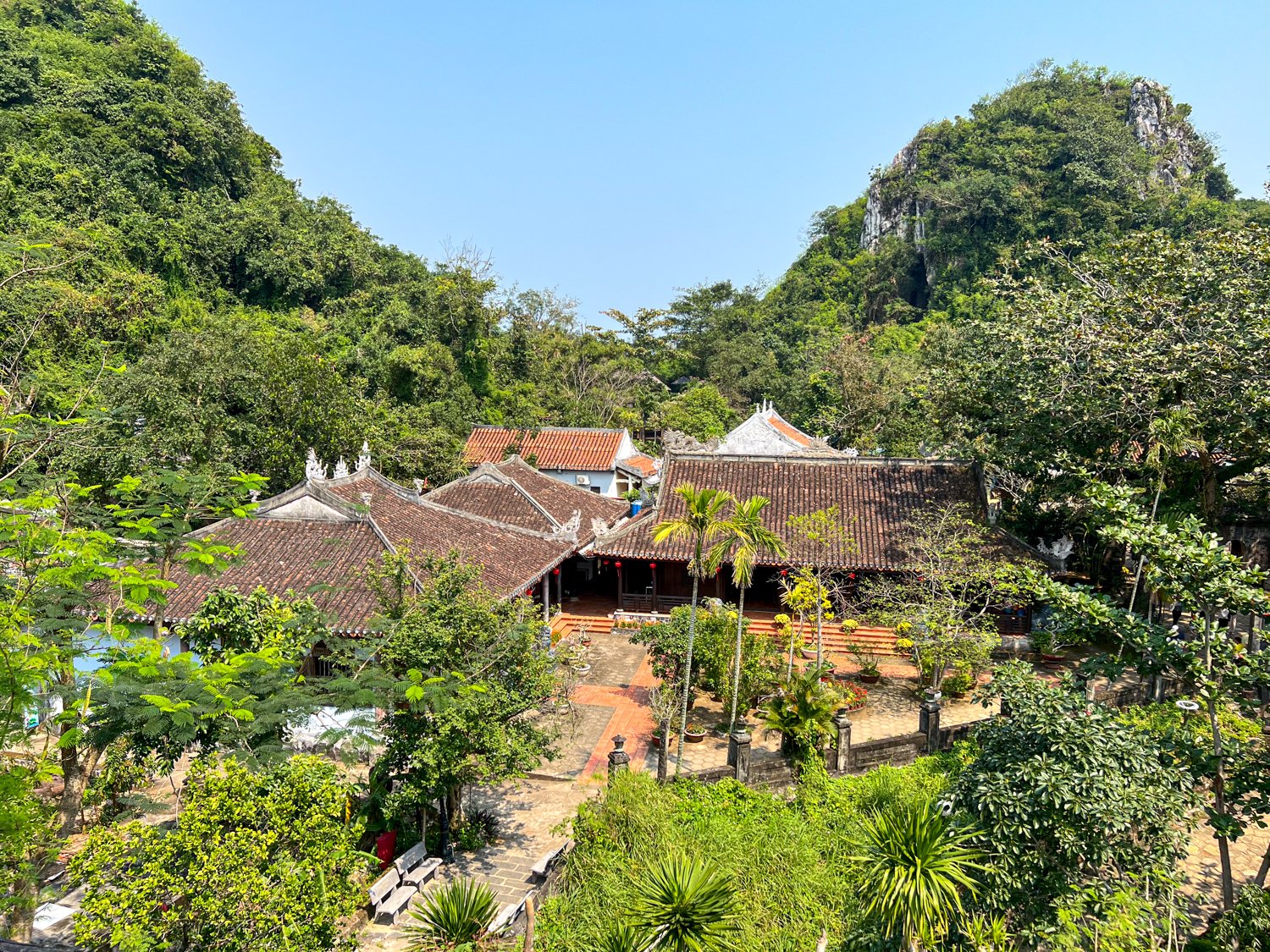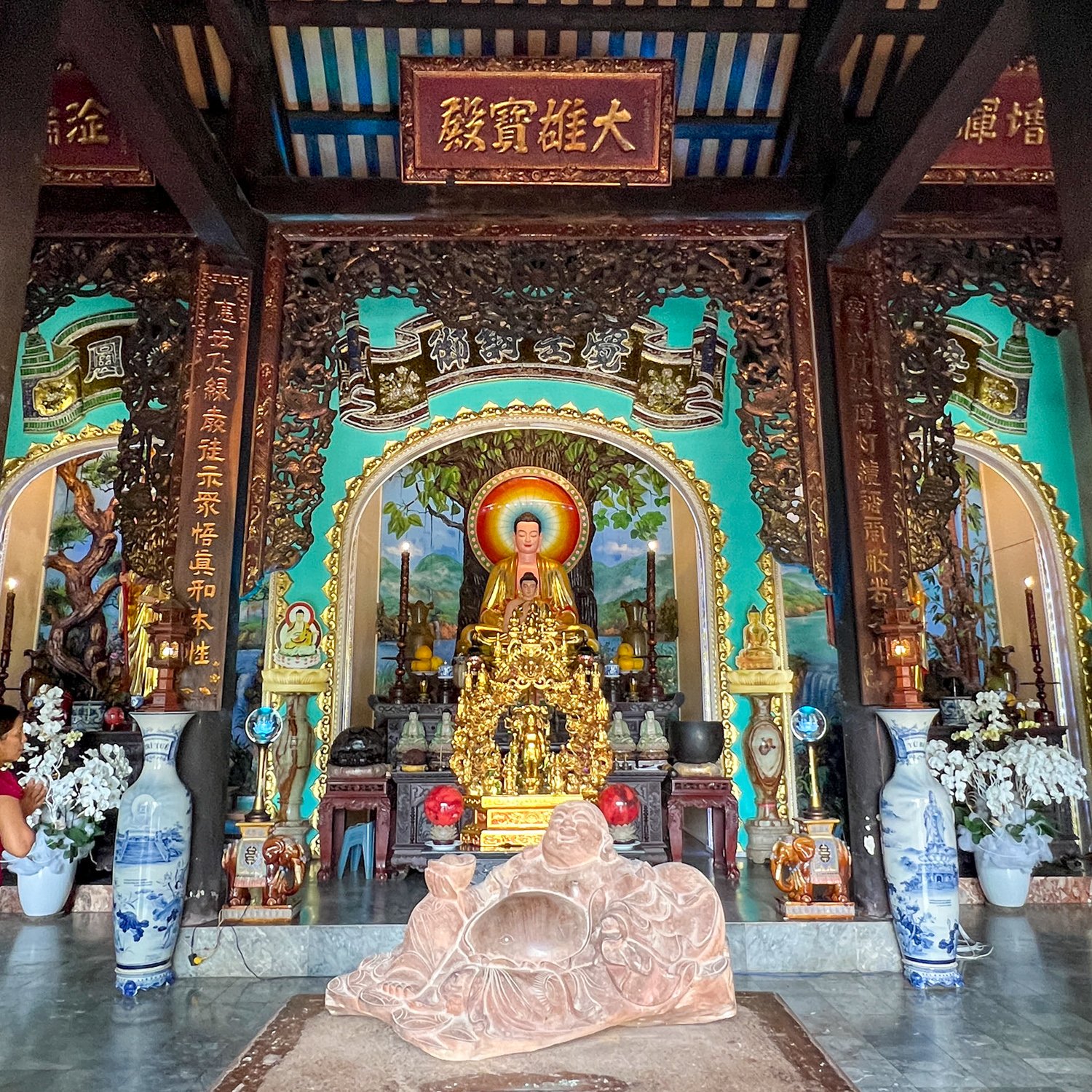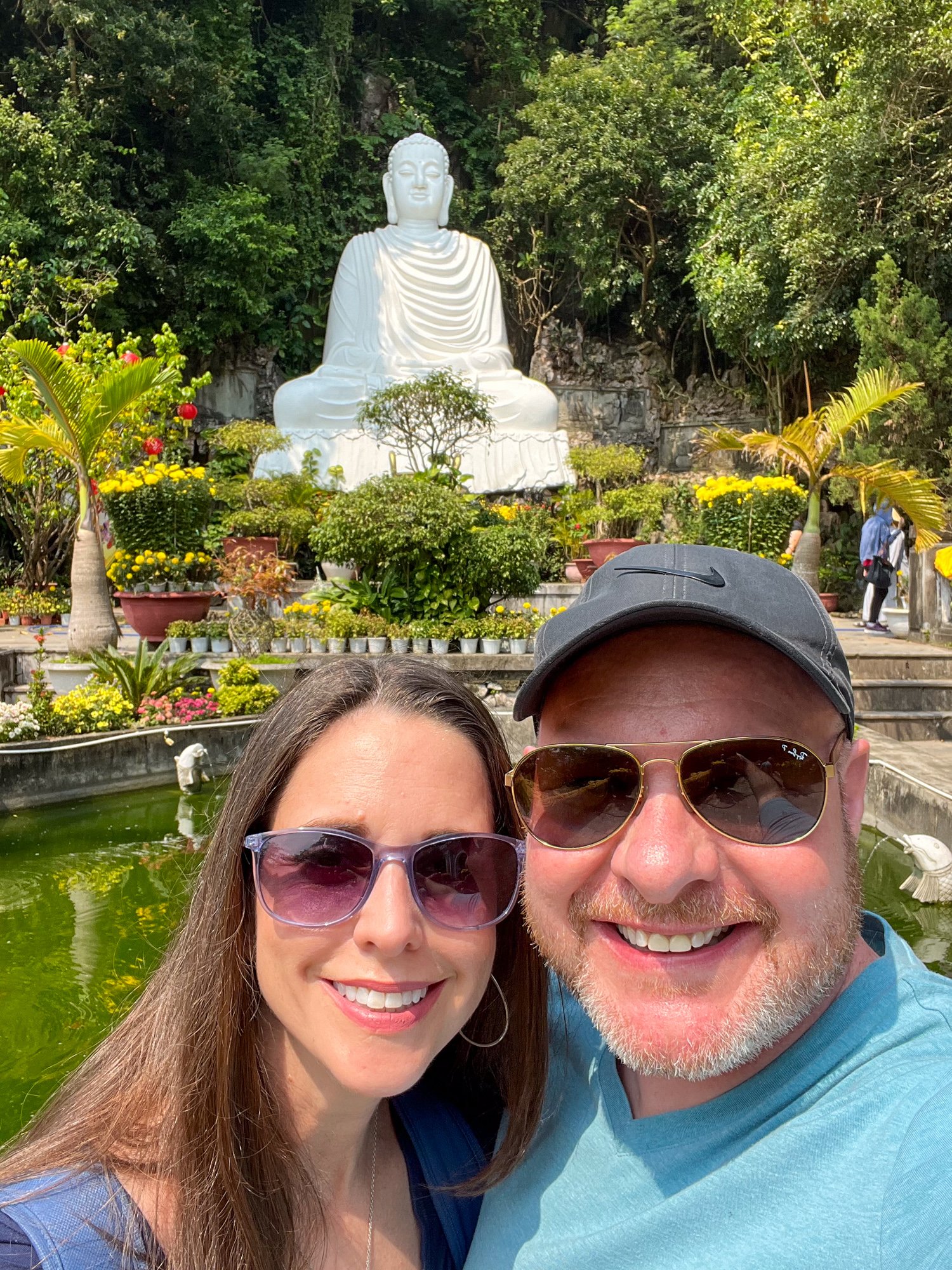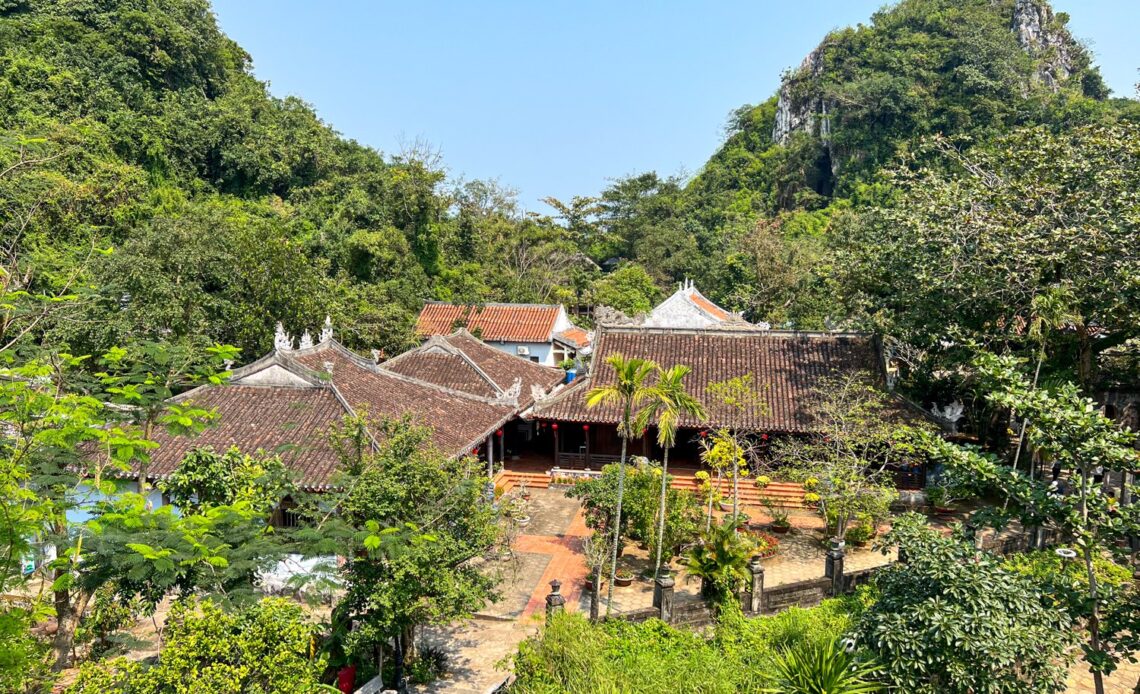Five marble and limestone mountains disrupt the flat landscape on the coastal plain near Da Nang. The Marble Mountains are not the most majestic in Vietnam or, for that matter, the largest.
But they indeed have an ethereal air to them. For one, they’re a strange sight—five tree-covered rocky hills rising in juxtaposition to the flat countryside and nearby South China Sea.
They’ve also been a spiritual haven for centuries, a holy place to wander and appreciate.

Spiritual History
The Marble Mountains are steeped in spiritual and mystical legend.
The Cham people, who lived in central and Southern Vietnam from the 2nd to the 17th century, believed the limestone and marble hills were sacred sites, especially the caves and tunnels running through the porous limestone.
According to Cham legend, a giant dragon gave birth to the mountains. From the sea, the great creature flew over the land, laying her eggs. They hatched into the enchanting mountains we see today.
Another version of the tale says the mountains emerged from the eggshell fragments.
Whether you believe they are a gift from Mother Nature or a mythical dragon, the Marble Mountains have always held spiritual significance in Vietnam.
The Cham worshipped there for centuries, converting many caves into Hindu sanctuaries.
After the fall of the Cham empire, the Buddhists took over, adding the temples and pagodas we see today. Some are more than 400 years old.

The mountains were named in 1825 by Minh Mang, the second emperor of the Nguyen Dynasty.
Named Ngu Hanh Son, the Five Elements Mountains, each peak refers to one of the five essential elements of Eastern philosophy:
- Kim (metal) – Metal Mountain
- Moc (wood) – Wood Mountain
- Hoa (fire) – Fire Mountain
- Tho (earth) – Earth Mountain
- Thuy (water) – Water Mountain
But it was during the French Colonial period that French geologists dubbed the peaks the “Marble Mountains” after learning their composition.
Red, white, and green marble was once quarried from the mountains, but all mining has ceased to keep the structural integrity.
Now, the area is a massive tourist draw. While all the mountains have caves and tunnels, Mount Thuy is the only one open to visitors.
Thuy Son Mountain

Mount Thuy, also called Thuy Son Mountain or the Water Mountain, is a spectacular and surreal…
Click Here to Read the Full Original Article at GoBackpacking…
